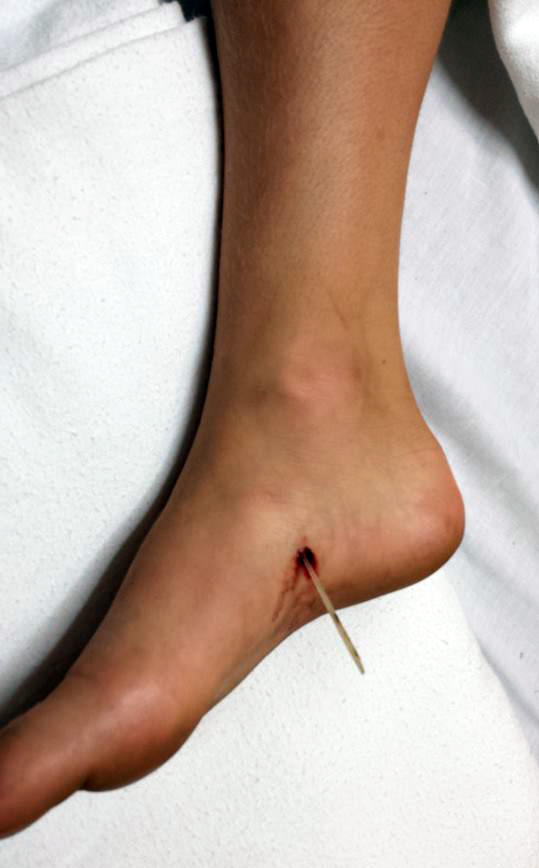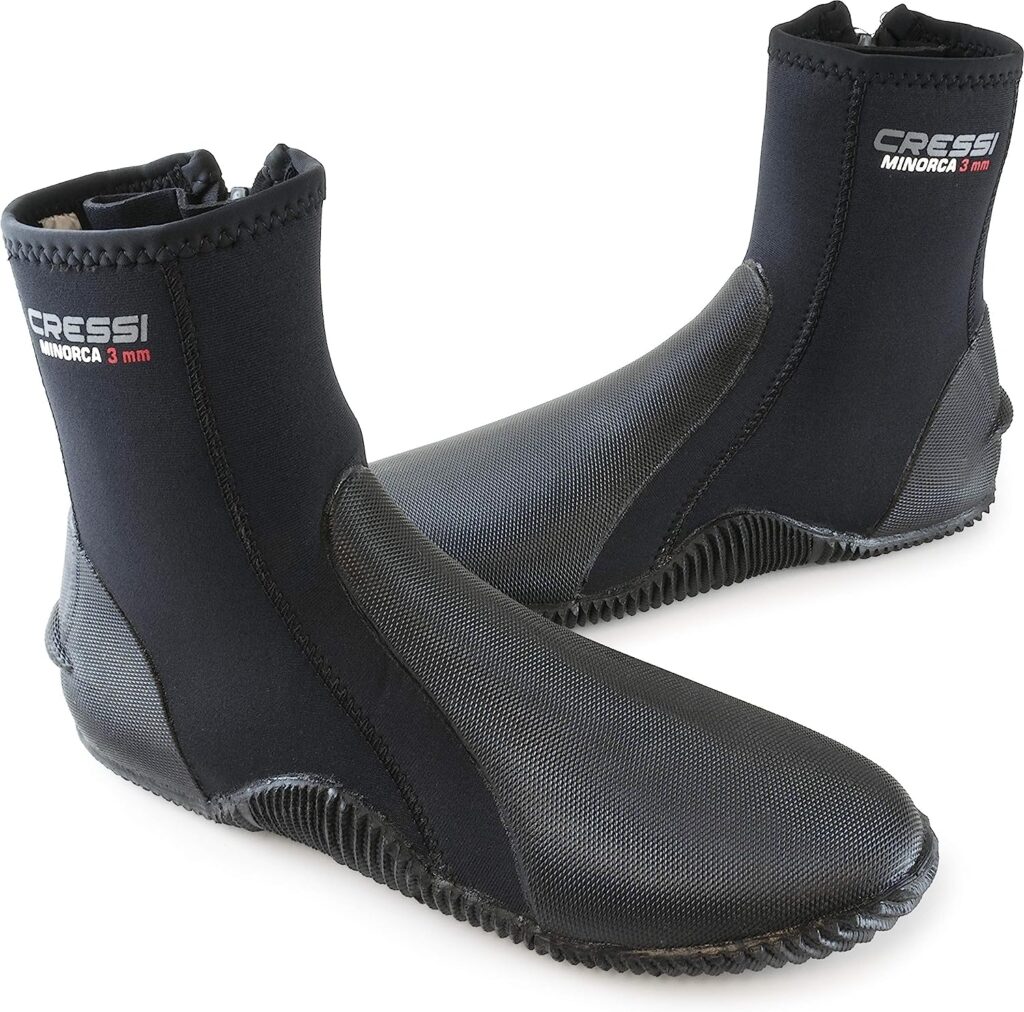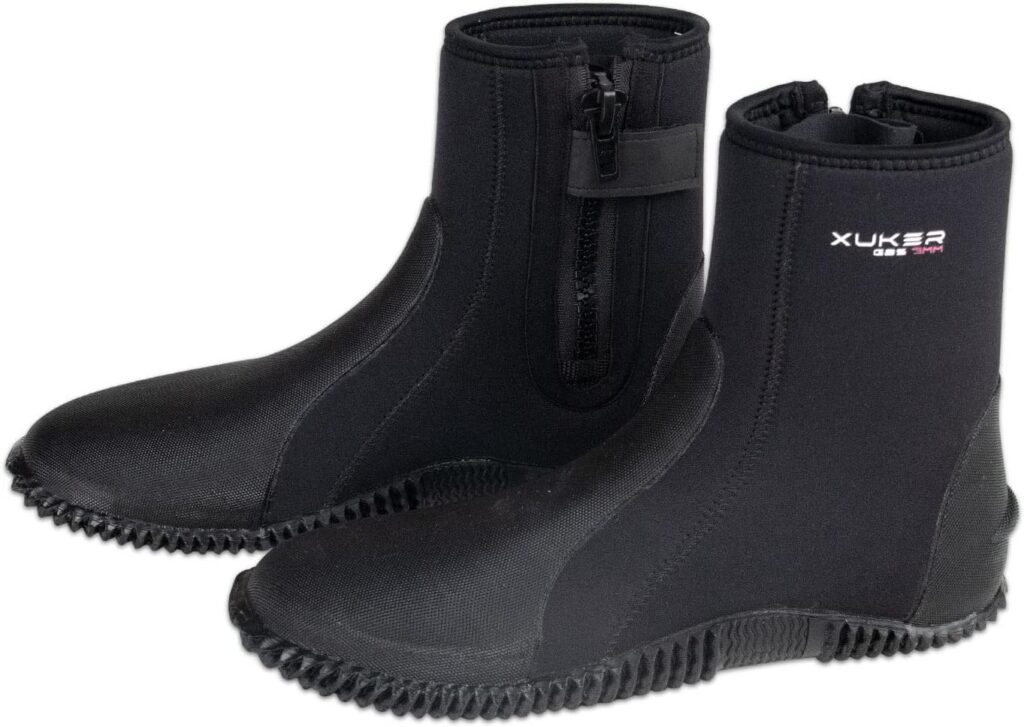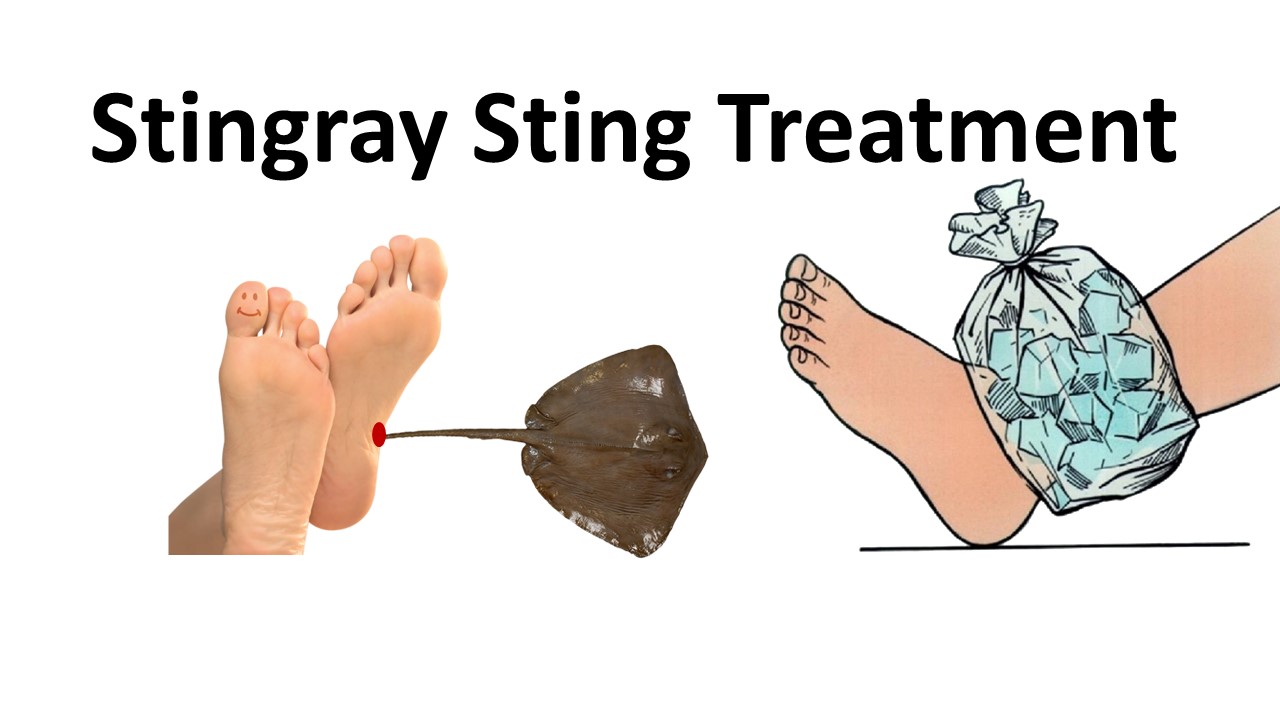Do Water Shoes Protect Against Stingrays – Exploring the Essential Safety Gear for Aquatic Adventures
Are you planning an exciting aquatic adventure and wondering, “Do water shoes protect against stingrays?” We understand the fear that lurks beneath the surface when it comes to these enigmatic creatures.
Beneath the tranquil waters lie unseen dangers, and among them, stingrays silently command respect. Their sleek bodies and gracefully undulating tails hide a potent weapon—the stinging barb. One of the sad stories about this creature is, on September 4, 2006, Steve Irwin was killed by a stingray while filming.
In this comprehensive article, we aim to shed light on the burning question: Do water shoes protect against stingrays? We will delve into the fascinating world of stingrays, examining their defensive mechanisms and the injuries they can cause. We will discuss crucial safety measures you can take to minimize the risk of a stingray encounter. Read on.
Do Water Shoes Protect Against Stingrays?
Traditional water shoes do not offer much protection against stingrays unless you wear sting ray guardz with them to protect your lower leg and ankle. Water shoes are designed to protect your feet from sharp rocks and rough surfaces, but they will not stop a stingray’s barb from penetrating.
However, water shoes can still be helpful in preventing stingray stings. The stingray shuffle is a technique where you shuffle your feet through the sand rather than lifting them up and down.
This movement warns stingrays of your approach, and they are more likely to swim away. Wearing water shoes can help you do the stingray shuffle more effectively, and they can also protect your feet from other hazards, such as jellyfish and urchins.
There are some water shoes that are specifically designed to protect against stingrays. These shoes are made with thicker, more durable materials that can withstand the barb of a stingray. They may also have additional features, such as a layer of Kevlar or a steel plate, which can further protect your feet.
If you are concerned about being stung by a stingray, it is a good idea to wear water shoes that are specifically designed for protection. However, even if you are not wearing these shoes, the stingray shuffle can still help to prevent stings.
RELATED: 15 Best Towable Tube For Boating
The Best Water Shoes To Protect Against Stingrays
These water shoes offer a combination of durability, comfort, and protective features, including thick soles, closed-toe designs, and a secure fit.
Whether you’re wading in shallow waters, engaging in water sports, or enjoying beach activities, these top-rated brands prioritize your safety while ensuring a comfortable and enjoyable water experience.
Here are the best water shoes for stingrays:
1. Cressi Neoprene Adult Anti-Slip Sole Boots – For Water Sports
Introducing the Cressi Neoprene Adult Anti-Slip Sole Boots – a highly regarded water shoe option for stingray protection. These boots offer a range of features that make them ideal for water sports and minimize the risk of stingray encounters.
Key Features
3 mm Neoprene Ultra Durable Short Boots
Anti-Slip Sole
Rubber Heel and Toe Cap
Super Elastic and Ultra Durable Nylon ll Neoprene for a comfortable fit.
Trusted Brand.
Pros
Reinforced rubber heel and toe caps for stingray protection.
Versatile Water Sports Use.
Comfortable Fit.
Ultra-durable materials and durable construction.
Trusted Brand known in the water sports industry.
Cons
Should size down by half.
Limited color
2. BPS 3mm Neoprene Dive Boots – Anti-Slip Premium Sole Boots for Water Sports
Introducing the BPS 3mm Neoprene Dive Boots – a top choice for water shoes that provide protection against stingrays. These boots offer several features to keep your feet comfortable, secure, and safe during water sports and beach activities.
Key Features
The adjustable Velcro strap around the top of the boot helps minimize water entry from the top.
A Velcro strap across the top of the foot ensures a secure fit and prevents feet from sliding around.
Cozy and Functional Design
Anti-slip rubber soles
Constructed with hard-wearing vulcanized rubber soles.
Pros
Stingray protection design
Water entry minimization
Comfortable and durable
Made from stretchy and ultra-durable 3mm Neoprene.
Excellent grip
Responsive customer support
Cons
Sizing issue. Size down by half.
Limited color option.
3. Phantom Aquatics Rapido Boutique Collection Wise 5mm Neoprene Wetsuit Zipper Dive Boot
The Phantom Aquatics Rapido Boutique Collection Wise 5mm Neoprene Wetsuit Zipper Dive Boot is a top-notch water shoe option for stingray protection. These boots are specifically designed to offer durability, strength, and exceptional functionality during water activities.
Key Features
Constructed with nylon 2 neoprene 5mm thickness.
The boots feature elastic seam taping and glue & sewn seams, ensuring strength and durability.
Sturdy outsole and rubberized armor.
Hook and loop zipper-end patch.
Improved Water Entry Design.
Pros
Sturdy outsole and rubberized armor for stingray protection.
Durable construction.
Hook and loop zipper-end patch for a secure fit.
Insulation and comfort.
Enhanced water entry design.
Cons
Size up.
Limited color
4. XUKER Premium Neoprene Diving Boots, 3mm & 5mm Water Shoes
The XUKER Premium Neoprene Diving Boots, 3mm & 5mm Water Shoes is a reliable choice for stingray protection during water sports. These water shoes offer a range of features that prioritize warmth, water resistance, and solid protection.
Key Features
These boots are made of neoprene material known for its durability, elasticity, and water resistance.
The glued blind-stitched method used in the construction helps prevent most water from entering the shoes.
Thermal insulation
Solid protection
Suitable for Various Water Sports
Pros
Stingray protection
Water resistance feature.
Thermal insulation
Durable
Super comfortable.
Cons
Sizing issue
Few color options.
5. Cressi Isla Boots 7 mm
Cressi Isla Boots 7 mm is a top-tier water shoe option that offers excellent protection against stingrays. These boots come with a range of features designed to provide comfort, durability, and warmth during water activities.
Key Features
Convenient zipper closure for easy on and off.
Cressi is a top brand.
Built-in sole for extra comfort.
Super elastic neoprene.
Thickness and warmth.
Pros
Stingray protection
Comfortable design.
Durable.
Easy to Wear.
Fin strap holder
Cons
Thickness and bulk
Sizing

Stingray Barb – What Are The Dangers Posed By Stingrays?
The stingray barb refers to a sharp, spine-like structure located at the base of a stingray’s tail. It is a unique anatomical feature that serves as a defense mechanism for the stingray. The barb is composed of a hard, bony material and is covered by a sheath made of a protein called keratin.
When a stingray feels threatened or agitated, it can whip its tail and use the barb to deliver a powerful and potentially venomous sting. The barb is equipped with serrated edges and backward-facing barbs or venomous spines, depending on the stingray species.
These features help the barb to anchor itself into the target and can make it difficult to remove without proper medical attention.
Stingrays are not typically aggressive creatures, but they can be dangerous if they feel threatened. They have a sharp, barbed tail that they use for self-defense. If a stingray stings you, the barb can penetrate your skin and inject venom. The venom can cause pain, swelling, and even death.
Steve Irwin, the famous Australian wildlife expert, was killed by a stingray in 2006. He was filming a documentary on stingrays when he stepped on one. The stingray barb penetrated his chest and pierced his heart. He died instantly.
In another incident, a man in Florida was stung on his penis by a stingray while swimming in the sea. The stingray barb penetrated his urethra and caused severe pain. He was rushed to the hospital, where he underwent surgery to remove the barb. He made a full recovery.
These examples serve as reminders that even though stingray encounters are infrequent, they can result in serious injuries or fatalities. It’s essential to exercise caution and be aware of the potential risks when in environments where stingrays are present.
Stingrays typically use their venomous barb as a defense mechanism when they feel threatened. When stepped on or cornered, they may react defensively by striking with their tail. The barb contains venom that can cause significant pain, tissue damage, and potential secondary infections.
While stingray injuries can be severe, it’s important to note that such incidents are relatively rare, and the vast majority of stingray encounters do not result in harm to humans.
How To Wear Water Shoes To Protect Against Stingrays
Wearing specially designed water shoes can provide an additional layer of protection against stingray stings when venturing into their habitats. Here are some tips on how to wear water shoes effectively to help protect against stingrays:
1. Choose the Right Water Shoes: Select water shoes that provide adequate coverage and are made from durable materials. Look for shoes with thick soles that can withstand potential encounters with stingray barbs.
Ensure that the shoes fit properly and offer a snug and secure fit to prevent them from slipping off in the water.
2. Wear Them at All Times: When entering the water, wear your water shoes at all times. Stingrays are most likely to be encountered in shallow coastal areas or near coral reefs, so it is essential to have your shoes on before entering these environments.
Avoid removing them until you are safely out of the water.
3. Properly Secure the Shoes: Ensure that your water shoes are properly secured to your feet. Most water shoes feature adjustable straps or laces that allow you to tighten them for a secure fit.
Double-check that the shoes are securely fastened to prevent them from coming off while swimming or walking in the water.
4. Cover Feet and Ankles: Water shoes should provide coverage not only for the soles of your feet but also for your ankles. Stingrays’ barbs are typically located at the base of their tails, and they may be present in the water or buried in the sand.
By covering your feet and ankles, you reduce the risk of a direct sting or puncture wound.

Stingrays Injury And Prevention (Do Water Shoes Protect Against Stingrays)
When it comes to stingray encounters, being aware of the potential injuries that can result is crucial. These encounters can lead to various types of injuries, primarily stings and puncture wounds.
Understanding these injuries and implementing effective prevention strategies are essential for minimizing the risks associated with these fascinating yet potentially dangerous creatures.
Stings from stingrays are the most common type of injury that individuals may experience. The stingray’s tail possesses a sharp and venomous barb, designed for self-defense.
If threatened or inadvertently stepped on, the stingray can swiftly strike its tail, resulting in a deep and painful sting. The venom injected through the barb can cause intense discomfort, swelling, and sometimes even systemic symptoms, such as muscle cramps or nausea.
In addition to stings, puncture wounds are another potential outcome of a stingray encounter. These wounds occur when the stingray’s barb pierces the skin, leaving a deep, narrow wound.
Puncture wounds can be particularly worrying as they may introduce bacteria into the body, leading to infections if not properly treated.
Prevention plays a vital role in minimizing the occurrence of stingray injuries. Understanding the behavior and habitats of stingrays can help individuals anticipate and avoid potential encounters.
Stingrays are commonly found in shallow coastal waters, sandy areas, or near coral reefs. By staying alert, avoiding stepping on or near stingrays, and respecting their space, the likelihood of an accidental encounter can be significantly reduced.
Protective measures are of utmost importance when engaging in water activities in stingray habitats. This is where specially designed water shoes come into play.
Water shoes for stingrays serve as a protective barrier between the soles of your feet and the stingray’s barb. The sturdy construction and thick materials of water shoes provide a level of defense against accidental stings and puncture wounds.
However, it is essential to note that while water shoes offer some level of protection, they are not foolproof. The venomous barb of a stingray can penetrate thin materials or areas where the shoe doesn’t provide coverage.
Therefore, water shoes should be seen as one part of a comprehensive safety strategy rather than a guaranteed shield against stingray injuries. However, the types of water shoes discussed above are great for protection against stingrays.

Best Stingray Protection (Tips For Preventing Stingray Stings)
Best stingray protection? Stingray stings can be painful and potentially dangerous, but with the right knowledge and precautions, you can greatly reduce the risk of encountering them. Here are some Best stingray protections for preventing stingray stings:
1. Shuffle Your Feet
When walking in shallow water or along sandy beaches where stingrays may be present, shuffle your feet instead of taking large steps. This technique creates vibrations in the sand, alerting stingrays to your presence and giving them a chance to swim away before you accidentally step on them.
2. Avoid Stepping on Stingrays
Stingrays often bury themselves in the sand, camouflaging themselves from predators and unsuspecting swimmers. Be mindful of where you’re stepping, especially in areas where stingrays are known to inhabit.
Take your time and scan the water and sand ahead to avoid accidentally stepping on or near a stingray.
3. Stay in Designated Swimming Areas
When swimming or snorkeling, stick to designated swimming areas whenever possible. These areas are typically monitored and cleared of potential hazards, including stingrays. Swimming in areas where local authorities have deemed safe can significantly reduce the risk of stingray encounters.
4. Use Protective Footwear
Wearing thick water shoes can provide an extra layer of protection against stingray stings. The thick soles and sturdy materials can help minimize the impact of accidental encounters and reduce the risk of their venomous barbs penetrating your feet.
If you are wearing your normal water shoes, use stingray guards to protect your ankle and lower leg. This gear will protect your foot and leg.
5. Observe Warning Signs and Local Guidelines
Pay attention to any warning signs or guidelines posted at beaches or near water bodies. These signs are usually placed to alert visitors to the presence of stingrays or other potential hazards. Follow the instructions provided and adhere to local guidelines to ensure your safety.
6. Observe From Above
Whenever possible, observe stingrays from above the water surface. This allows you to admire them without direct physical interaction. Watching them glide effortlessly through the water can be a mesmerizing experience, and observing from a distance minimizes the risk of accidental contact.
7. Be Mindful of Stingray Habitats
Stingrays are often found in shallow coastal waters, near coral reefs, or in areas with sandy bottoms. Be aware of these habitats and exercise caution when entering or exploring these environments.
Take extra care when wading in water with limited visibility, as it can be challenging to spot stingrays lurking beneath the surface.
8. Avoid Sudden Movements
Sudden movements can startle stingrays and potentially provoke a defensive response. Make slow, deliberate movements in the water to avoid surprising or alarming them. By moving calmly and purposefully, you can create a relaxed atmosphere and promote a more peaceful interaction.
9. Maintain A Safe Distance
When encountering stingrays, it is important to keep a safe distance. Respect their personal space and avoid moving towards them. Give them the freedom to swim and move without feeling threatened or cornered.
Remember, observing stingrays from a distance allows you to appreciate their beauty while minimizing the risk of accidental contact.
10. Seek Local Knowledge
If you’re in an unfamiliar location or visiting an area known for stingrays, seek information from local experts, lifeguards, or tour operators. They can provide valuable insights into stingray behavior, prevalent areas, and safety tips specific to the region.
Their knowledge and expertise can help you make informed decisions and minimize the risk of stingray stings.
If you do step on a stingray, do not try to remove the barb. This can cause more damage. Instead, seek medical attention immediately.
Prevention is key when it comes to stingray stings. By shuffling your feet, being aware of their presence, using protective footwear, and following local guidelines, you can greatly reduce the likelihood of encountering these marine creatures and enjoy a safe and memorable time in the water.
The Symptoms Of Stingrays Stings (Do Water Shoes Protect Against Stingrays)
When stung by a stingray, it is important to recognize and understand the symptoms to seek appropriate medical attention. The symptoms of a stingray sting can vary in severity and may include:
1. Immediate Intense Pain: The most notable symptom of a stingray sting is immediate and intense pain at the site of the injury. The pain is often described as sharp, burning, or throbbing and can be quite severe.
2. Swelling and Redness: The stingray’s venom and the mechanical injury from the barb can cause swelling and redness around the sting site. The affected area may become inflamed and tender to the touch.
3. Bleeding: Stingray stings can cause puncture wounds, which may lead to bleeding. The severity of bleeding can vary depending on the depth and location of the sting.
4. Lacerations or Tissue Damage: In some cases, stingray barbs can cause lacerations or significant tissue damage, especially if the barb has deeply penetrated the skin. This can result in more extensive bleeding and a higher risk of infection.
5. Difficulty Moving or Using the Affected Area: Depending on the location of the sting, individuals may experience difficulty moving or using the affected limb or body part. This can be due to pain, swelling, or the nature of the injury itself.
6. Numbness or Tingling: Stingray venom can sometimes cause numbness or tingling around the sting site or radiating to other areas. This sensation may be temporary or persist for a longer period, depending on the individual and the specific sting.
7. Systemic Symptoms: In rare cases, stingray stings can lead to systemic symptoms, affecting the whole body if not treated quickly. These symptoms may include nausea, vomiting, muscle cramps, weakness, dizziness, sweating, or difficulty breathing. If these symptoms occur, seek immediate medical attention.
It is important to note that stingray stings can introduce bacteria into the body, which may lead to secondary infections. If the sting site shows signs of increasing pain, redness, warmth, or discharge, it could indicate an infection and should be evaluated by a healthcare professional.
If you or someone you know has been stung by a stingray and experiences severe symptoms, excessive bleeding, difficulty breathing, or signs of an allergic reaction, it is crucial to seek immediate medical attention.
Stingray stings can be serious and require proper evaluation and treatment by healthcare professionals.
RELATED: What Is The Best Life Jacket – 20 Best Life Jackets For Adults And Kids
First Aid For Stingray Sting (Stingray Sting Treatment)
First aid for a stingray sting is crucial to alleviate pain and minimize potential complications. Here are the key steps to follow in the event of a stingray sting:
1. Get to Safety: Move to a safe location away from the stingray to avoid further injury or stings.
2. Remove Stinger and Tentacles: If any tentacles are still attached to the skin, carefully remove them using tweezers or a gloved hand. Avoid using bare fingers to prevent additional venom transfer.
3. Cleanse the Wound And Stop Bleeding: Rinse the affected area with clean, warm seawater or fresh water. Avoid using vinegar, urine, or alcohol, as they may worsen the pain and potential venom release. Also, stop bleeding.
4. Apply Heat: Immerse the affected area in hot water (not scalding) for 30-90 minutes. The water temperature should be around 45-50°C (113-122°F). This helps inactivate the venom and provides pain relief.
5. Manage Pain and Swelling: Over-the-counter pain relievers such as ibuprofen or acetaminophen can help manage pain and reduce inflammation. Applying a cold pack or ice wrapped in a cloth can also alleviate swelling.
6. Seek Medical Attention: Stingray stings can vary in severity, and medical evaluation is recommended, especially for deep wounds, severe pain, excessive bleeding, signs of infection, or systemic symptoms.
7. Tetanus Vaccination: If it has been more than five years since your last tetanus shot, consider getting a tetanus booster to prevent potential tetanus infection.
Remember, these first aid steps are general guidelines, and it is essential to seek professional medical advice for appropriate evaluation and treatment based on the specific circumstances of the stingray sting.
READ ALSO: Day After Stingray Sting: How To Conquer Pain with Ease
The Bottom Line On Do Water Shoes Protect Against Stingrays
The question “Do water shoes protect against stingrays?” has been thoroughly examined, shedding light on the importance of taking preventive measures when entering stingray habitats. While water shoes can provide an added layer of protection against stingray stings, it is crucial to remember that they are not a foolproof solution.
To maximize your safety, combine wearing water shoes with other precautions such as shuffling your feet, staying alert, and following local guidelines. By implementing these measures, you can enjoy your aquatic adventures with greater peace of mind, minimizing the risk of encountering stingrays and ensuring a safer experience in the water.
So, when it comes to exploring stingray habitats, remember that water shoes serve as a valuable tool in your quest for protection and peace of mind.








